Written in Stone
Making Cecil B. DeMilles Epic,
The Ten Commandments
Katherine Orrison
Exclusive Egyptian Location Photographs
by Ken Whitmore

VESTAL PRESS, Inc.
Published in the United States of America
by Vestal Press, Inc.
4720 Boston Way
Lanham, Maryland 20706
Copyright 1999 by Vestal Press, Inc.
All rights reserved. No part of this publication may be reproduced, stored in a retrieval system, or transmitted in any form or by any means, electronic, mechanical, photocopying, recording, or otherwise, without the prior permission of the publisher.
Library of Congress Cataloging-in-Publication Data
Orrison, Katherine, 1948
Written in stone : making Cecil B. DeMilles epic, the Ten commandments / Katherine Orrison ; exclusive Egyptian location photographs by Ken Whitmore.
p. cm.
ISBN: 978-1-879511-24-8
1. Ten commandments (Motion picture) I. Title.
PN1997.T39077 1999
791.4372dc21
9851596
CIP
 The paper used in this publication meets the minimum requirements of American National Standard for Information SciencesPermanence of Paper for Printed Library Materials, ANSI/NISO Z39.481992.
The paper used in this publication meets the minimum requirements of American National Standard for Information SciencesPermanence of Paper for Printed Library Materials, ANSI/NISO Z39.481992.
Manufactured in the United States of America.
For Sherman
and F. J. G. C.
... I kicked off my shoes
and followed you barefoot
into the desert thirty years ago.
Contents
.
About the Author
Preface
Despite the fact that Id worked in the movie industry in one capacity or another for almost twenty-five years, it was March 1991 before I ever had an official reason to go to Paramount Studios. Not that I hadnt been there beforelots of times. Most notably, on Paramounts seventieth anniversary, when Id cruised through the Marathon Boulevard gate with Paramount producer Henry Wilcoxon in his 1957 white Thunderbird for a special screening of Sunset Boulevard. Id also been on hand for Paramounts seventy-fifth anniversarya much bigger affairwhere I had the thrill of watching Joel McCrea (a good six-feet, six inches in cowboy boots and cowboy hat!) and Frances Dee gracefully alight from a stretch limousine en route to a class reunion of Paramount contract players from its golden era.
A Lone Throne Chair
But, as for movie work, the kind of movies Ive worked on always seemed to prefer shooting on location. Not that the film that employed me in 1991 was any differentwhat was different was the production designer, Byrnadette. My friend Byrnadette bears a striking resemblance to silent-screen star Mabel Normand. She has a slow, southern drawl, a pouty 1920s mouth and large brown eyes. She could talk the devil into central heating in the middle of summer. And Im certain shes never seen a Mabel Normand movie. But she knows moviemaking, and brooks no nonsense when it comes to the gender gap. She expects doors to open, so they do.
For our latest movie effort, Byrnadette had rented furniture from Paramounts property department. As a consequence, her art director, Johnna, and I found ourselves underneath one of Paramounts soundstages one morning, Polaroiding possibilities for set furniture. We also rearranged everything we could reach. A rare March thunderstorm the night beforea deluge of biblical proportionshad drained in underneath the stage. At least half of Paramounts furniture stood in inches of oily rainwater.
Over in the chair row, above the water but showing considerable damage from wear and tear on various movie sets, we spied one lone Egyptian-style throne chair from The Ten Commandments.
Want to rent it and drive around with it in the back of the prop truck for good luck? Johnna asked slyly from behind my back. Reluctantly, I ruled it out, as the broken chair looked too fragile to go anywhere, even with multiple furniture pads and packing paper cushioning every L.A. pothole. And I was sure our producer, David Korda, would question such a rental on our art department balance sheet: One broken Egyptian-style chair, definitely in The Egyptian and most likely in The Ten Commandments, for the entire length of the production (for good luck).
We took a picture instead. And I found a broom and began sweeping water out the door, as Johnna left to sign papers with the property department for the props wed tagged.
The Chariot Room
So I almost didnt see the large wooden crates stacked in a far corner. The Arabic writing caught my eye, and the size and shape piqued my interest. Gingerly, I waded my way over to them and carefully lifted the top of the first packing crate to peer inside.
It was a chariot! Delicate and gracefully designed, its wheels were made of thin iron with distinctive lotus-shaped spokes, its body made of woven wicker. The rotting harness, complete with handmade bridle tassels thrown on top, was gathering dust.
Rameses:
Commander of the Hosts, call in the chariots from Tanis. There shall be one more plague.... They shall remember the name of Moses... only that he died under my chariot wheels! Let the trumpets sound! Assemble all chariots at the city gate! Nura and Thebes will draw my chariot.
I picked up a stiff, brittle leather bridle, and wondered who this chariot had belonged to: Rameses? Pentaur? The tassels were red. Probably Pentaur. I looked through the slats of other crates; no black and gold colors were discernible. The hero chariot might not even be here. It looked like these had been crated in Egypt, shipped back to the States, and never opened.
Is that Henry Wilcoxons chariot? Johnna asked later, as we were loading the furniture onto the truck.
I looked in the direction she indicated: the one chariot not crated was a large, bulky silver number with multispiked metal wheels and a long, thick metal shaft still attached.
No. Thats a Roman design, I said. Its probably from Sign of the Cross, or maybe Ben-Hur. MGM sold their inventory in the early seventies, and other studios bought what they needed.
Johnna peered inside the crates and was awestruck by the beauty and detail of the Ten Commandments chariots. These are way cool, she whistled softly. This is like poking around in King Tuts tomb. And Ill bet you can tell every movie this stuff has been in!
I realized, with a start, that I just about could. It had never occurred to me before just how much of my life was involved with Paramount Studios, in general, and The Ten Commandments, in particular....
The first major studio to begin in Hollywood (1913) and, as of this writing, the only major studio to still be based and operating in Hollywood, Paramount was homeonce every decade in the golden erato a trend-setting director (who usually paid the price for his avant-garde tastes with a parting from the studios cloistered atmosphere about mid-decade): Cecil B. DeMille from 1919 to 1924 with a plethora of pre-code takes on the sexual mores of his day; Josef Von Sternberg from 1930 to 1935 with his lush, claustrophobic visual poems to Marlene Dietrich; Preston Sturges from 1940 to 1945 with the Sturges Stock Company of vaudeville stage comedians, with whom he often surrounded some of Paramounts best leading ladies and most overlooked leading men.
Among these big three, only DeMille professionally survived to return to Paramount at a later date and work to the very end of the Golden Age of the studio system he had helped create. Only DeMille went out on top. With his second telling of The Ten Commandments.
Why?
Next page


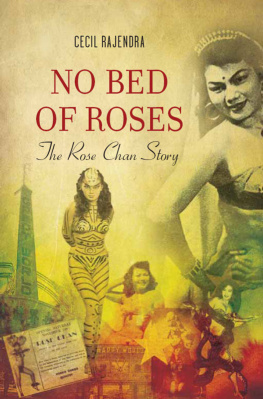


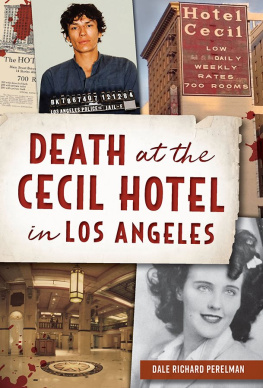
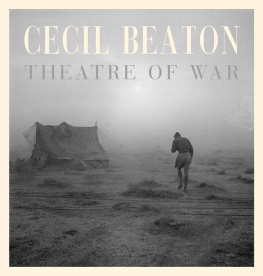
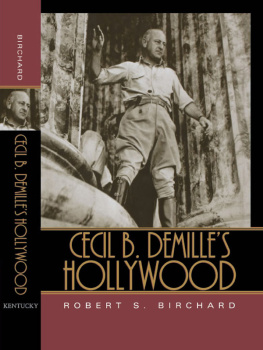
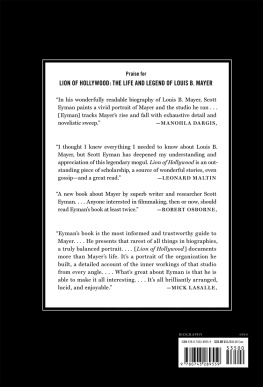


 The paper used in this publication meets the minimum requirements of American National Standard for Information SciencesPermanence of Paper for Printed Library Materials, ANSI/NISO Z39.481992.
The paper used in this publication meets the minimum requirements of American National Standard for Information SciencesPermanence of Paper for Printed Library Materials, ANSI/NISO Z39.481992.